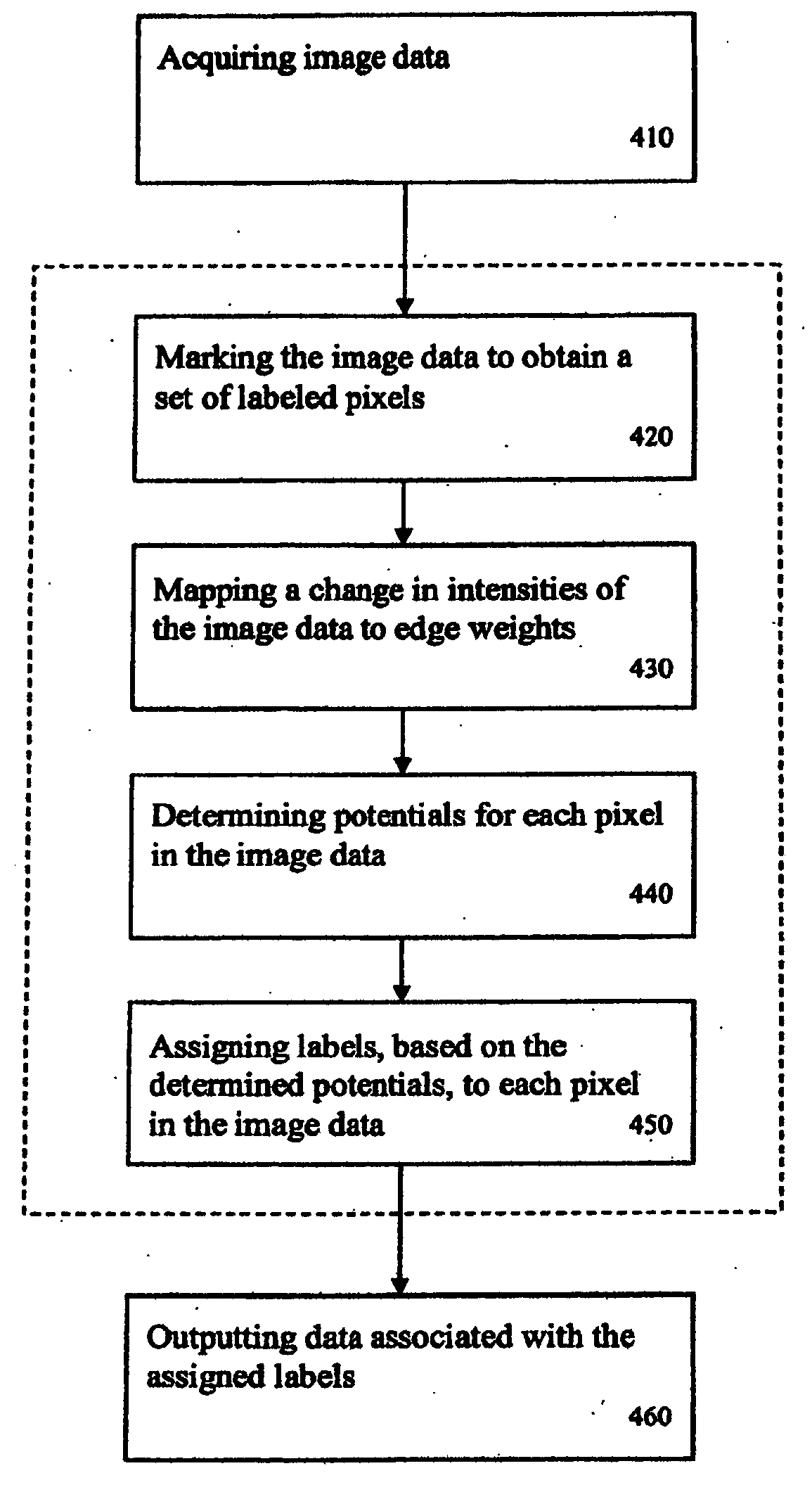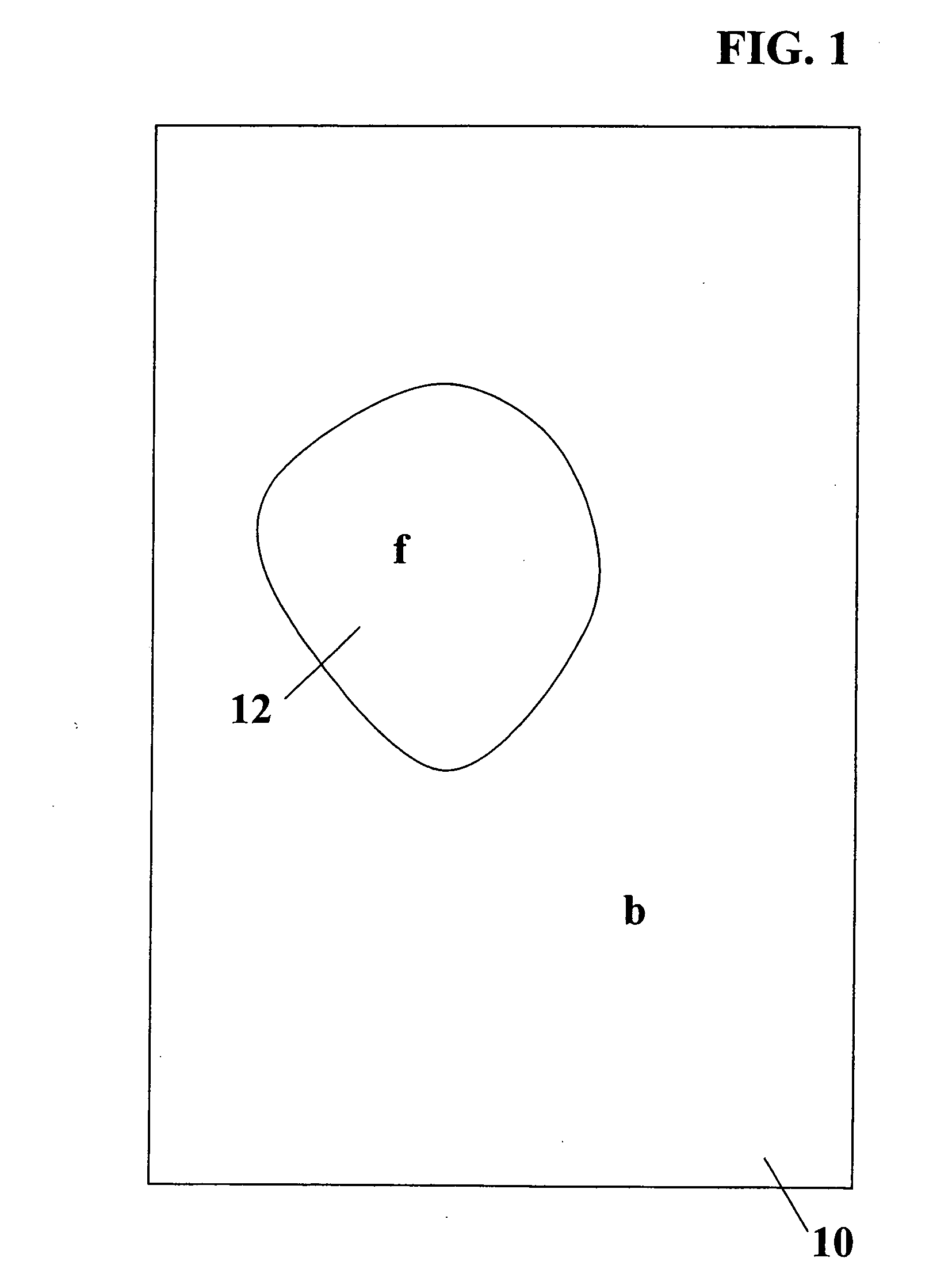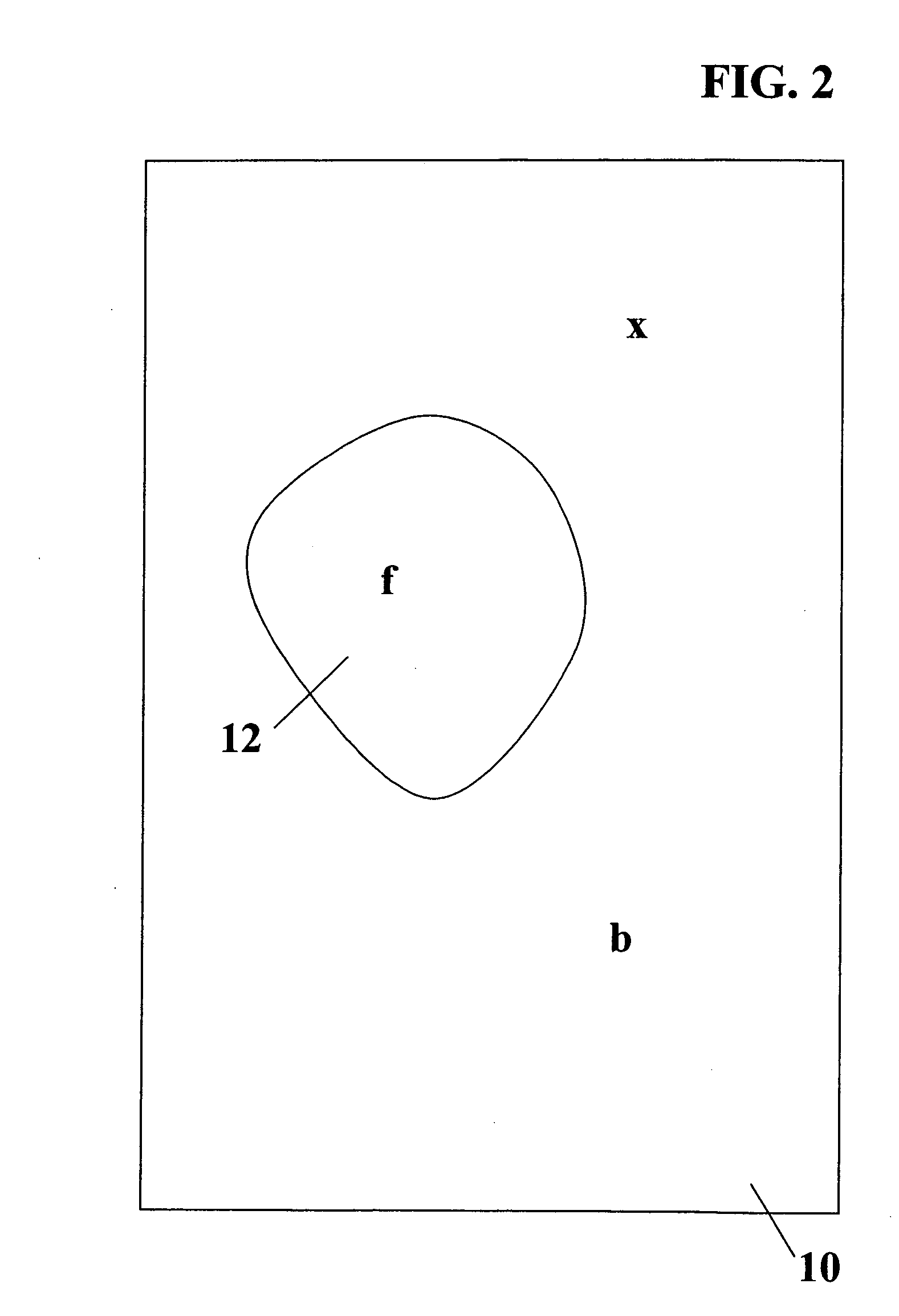GPU accelerated multi-label digital photo and video editing
a multi-label, digital photo and video technology, applied in image enhancement, image analysis, instruments, etc., can solve the problems of limited capabilities, time-consuming and time-consuming tools, and frustration of users, and achieve the effect of saving processing tim
- Summary
- Abstract
- Description
- Claims
- Application Information
AI Technical Summary
Benefits of technology
Problems solved by technology
Method used
Image
Examples
Embodiment Construction
[0030] The present invention provides for the segmentation of objects in a digital image. Segmentation refers to the identification of the boundaries of the object in the image. Once the boundaries of the object have been identified, the object can be processed by editing tools. For example, the definition of the boundary can be used to remove or to copy the object from a first image and placed in a second image. Additionally, the object can be modified or edited in any other way using available digital editing tools.
[0031] In one aspect of the present invention, the random walker algorithm is used to determine the boundaries of the object in an image. In accordance with another aspect of the present invention, the random walker algorithm equations are solved in a graphic processor unit. The random walker algorithm is described in U.S. patent application Ser. No. 11 / 029,442, filed on Jan. 5, 2005, and in U.S. Provisional Application No. 60 / 538,670, filed on Jan. 23, 2004, both of w...
PUM
 Login to View More
Login to View More Abstract
Description
Claims
Application Information
 Login to View More
Login to View More - R&D
- Intellectual Property
- Life Sciences
- Materials
- Tech Scout
- Unparalleled Data Quality
- Higher Quality Content
- 60% Fewer Hallucinations
Browse by: Latest US Patents, China's latest patents, Technical Efficacy Thesaurus, Application Domain, Technology Topic, Popular Technical Reports.
© 2025 PatSnap. All rights reserved.Legal|Privacy policy|Modern Slavery Act Transparency Statement|Sitemap|About US| Contact US: help@patsnap.com



